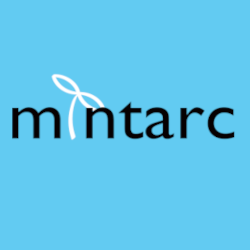New pages
From Mintarc Forge
22 May 2025
- 22:4422:44, 22 May 2025 Media Wiki (hist | edit) [2,934 bytes] Makoto (talk | contribs) (Created page with "media wikiで、文字を目立たせるプロンプトをいろいろ教えて ## MediaWikiで文字を目立たせる方法いろいろ **太字・斜体** - 太字:`'''太字'''` → **太字**になる[1][8] - 斜体:`''斜体''` → *斜体*になる[1][8] - 太字+斜体:`'''''強調'''''` → ***強調***になる **文字色・背景色** - `<span style="color:red;">赤字</span>` → 赤字 - `<span style="background:yellow;">背景黄色</span>` →...")
- 22:3822:38, 22 May 2025 WSL (hist | edit) [2,495 bytes] Makoto (talk | contribs) (Created page with "==WSLとは== WSL(Windows Subsystem for Linux)は、Microsoftが提供するWindowsの拡張機能で、Windows上でLinux環境を動かせる仕組みです。これにより、仮想マシンやデュアルブートを使わずに、UbuntuやDebianなどのLinuxディストリビューションをWindows上で直接実行できます。 ===主な特徴=== - WindowsとLinuxを同時に利用可能で、開発者向けに便利なツール。<br/> - Linuxのコマ...")
16 May 2025
- 11:0211:02, 16 May 2025 ひよっこ書庫 (hist | edit) [4,321 bytes] Makoto (talk | contribs) (Created page with "初心者のための知識の宝庫")
11 May 2025
- 12:1212:12, 11 May 2025 20250507トレーニング (hist | edit) [2,138 bytes] Makoto (talk | contribs) (Created page with "==copyとrsync== copy(cpコマンドなど)とrsyncの主な違いは、転送方法と効率性にあります。 *copyは、指定したファイルやフォルダを単純にそのままコピーします。毎回すべてのファイルをコピーするため、同じ内容でも再度全転送が発生します。 *rsyncは、コピー元とコピー先を比較し、変更があったファイルや新規ファイルのみを転送します(差分転送)...")
2 May 2025
- 00:0100:01, 2 May 2025 Linuc ja (hist | edit) [92,019 bytes] Makoto (talk | contribs) (Created page with "=2.01: System Boot and Linux Kernel= ==BIOS and UEFI Fundamentals== The BIOS (Basic Input/Output System) and UEFI (Unified Extensible Firmware Interface) are firmware interfaces responsible for initializing hardware during system startup and loading the operating system. BIOS, the older standard, relies on the Master Boot Record (MBR) partitioning scheme, which supports up to four primary partitions and boot drives up to 2.2 TB. In contrast, UEFI uses the GUID Partition...")
30 April 2025
- 01:5201:52, 30 April 2025 Linuc (hist | edit) [30,849 bytes] Tommy (talk | contribs) (Created page with "=2.01: System Boot and Linux Kernel= ==Boot process and GRUB== ===BIOS and UEFI Fundamentals=== The BIOS (Basic Input/Output System) and UEFI (Unified Extensible Firmware Interface) are firmware interfaces responsible for initializing hardware during system startup and loading the operating system. BIOS, the older standard, relies on the Master Boot Record (MBR) partitioning scheme, which supports up to four primary partitions and boot drives up to 2.2 TB. In contrast, U...")
20 April 2025
- 22:5022:50, 20 April 2025 相互運用性 (hist | edit) [912 bytes] Makoto (talk | contribs) (Created page with "'''相互運用性(インターオペラビリティ)とは、異なるシステムやソフトウェア、組織が互いにデータやサービスを効率的かつ安全に交換・連携できる能力や特性のことです。''' 例えば、異なるメーカーのITシステムやアプリケーション同士が、標準化されたデータ形式やプロトコルを使ってスムーズに情報共有できる状態を指します。 IEEEの定義では...")
- 22:3822:38, 20 April 2025 スケーラビリティ (hist | edit) [847 bytes] Makoto (talk | contribs) (Created page with "'''スケーラビリティとは、システムやソフトウェア、ビジネスなどが利用者数やデータ量、処理負荷の増加に柔軟に対応できる「拡張性」や「拡張可能性」を指します。'''例えば、利用者が増えても性能やサービス品質を維持しながら、必要に応じてリソース(サーバーやストレージなど)を追加できる能力のことです。 スケーラビリティの高いシス...")
- 22:3022:30, 20 April 2025 エンタープライズ (hist | edit) [517 bytes] Makoto (talk | contribs) (Created page with "'''エンタープライズとは、主に「大企業」や「公的機関」など規模の大きな法人を指す言葉です。'''IT分野では、大企業向けの製品やサービスの市場区分として使われることが多く、個人向けや中小企業向け(SMB)と区別されます。 IT製品では、例えば「Windows 10 Enterprise」は大企業向けの機能を備えたエディションであり、個人向けの「Home」や中小企業...")
16 April 2025
- 11:4311:43, 16 April 2025 PepVoidBuilder (hist | edit) [4,752 bytes] Tommy (talk | contribs) (Created page with "=Pep VIOD Builder= <pre> ************* Module iso_builder iso_builder.py:12:0: C0301: Line too long (104/100) (line-too-long) iso_builder.py:41:0: C0301: Line too long (120/100) (line-too-long) iso_builder.py:92:0: C0301: Line too long (115/100) (line-too-long) iso_builder.py:103:0: C0301: Line too long (101/100) (line-too-long) iso_builder.py:104:0: C0301: Line too long (104/100) (line-too-long) iso_builder.py:143:0: C0301: Line too long (111/100) (line-too-long) iso_bu...")
11 April 2025
- 04:3904:39, 11 April 2025 XCP ng (hist | edit) [4,411 bytes] Tommy (talk | contribs) (Created page with "=XCP-ng Overview= XCP-ng is an open-source virtualization platform built on the Xen hypervisor, offering a turnkey solution for managing virtual machines (VMs) across bare-metal servers. Originating as a community-driven fork of Citrix XenServer, XCP-ng removes proprietary limitations while retaining enterprise-grade features like live migration, high availability (HA), and multi-tenancy. Licensed under the GNU General Public License (GPL), it provides a cost-effective a...")
- 04:3704:37, 11 April 2025 OpenNebula (hist | edit) [4,844 bytes] Tommy (talk | contribs) (Created page with "=OpenNebula Overview= OpenNebula is an open-source cloud computing platform designed to manage heterogeneous data center, public cloud, and edge computing infrastructure. It provides a unified framework for orchestrating virtualized workloads across hybrid environments, supporting multi-tenancy, self-service provisioning, and integration with existing enterprise systems. Licensed under the Apache License 2.0, OpenNebula serves as a flexible solution for building private,...")
- 02:5302:53, 11 April 2025 LXD LXC (hist | edit) [4,686 bytes] Tommy (talk | contribs) (Created page with "=LXD Overview= LXD (Linux Container Daemon) is an open-source platform for managing system containers and virtual machines (VMs) with a unified interface, combining the performance of Linux Containers (LXC) and KVM-based virtualization. Developed by Canonical, LXD provides a cloud-like experience for deploying isolated Linux environments and lightweight VMs, emphasizing security, scalability, and operational efficiency. It is licensed under the Apache License 2.0 and ser...")
